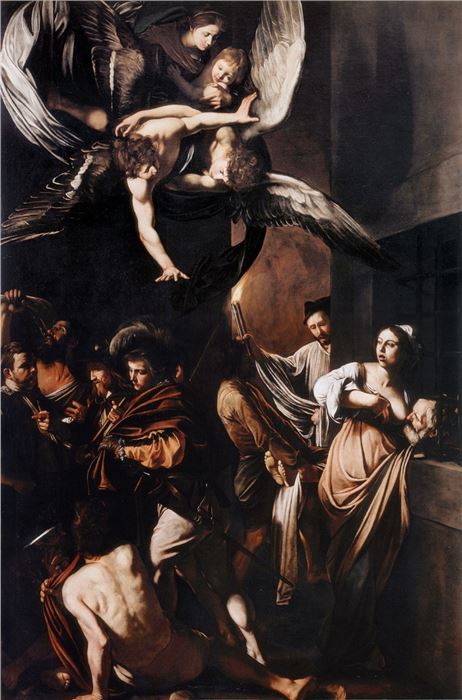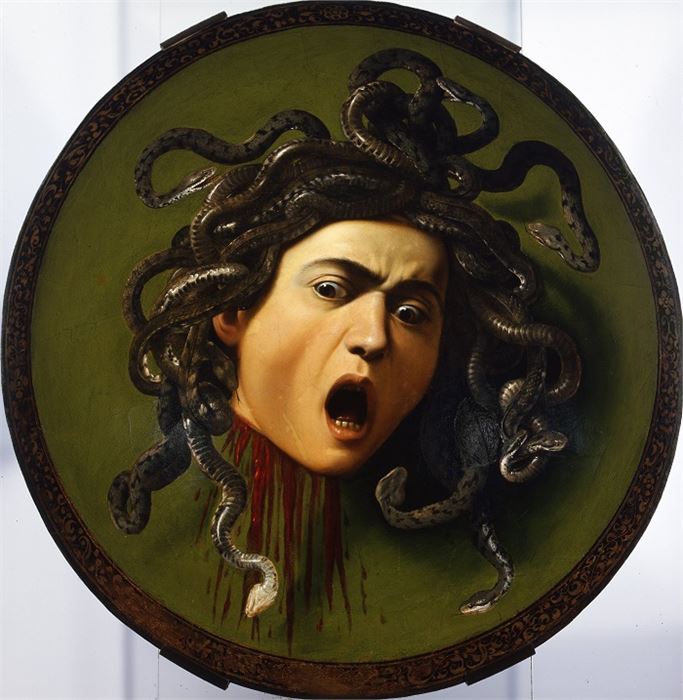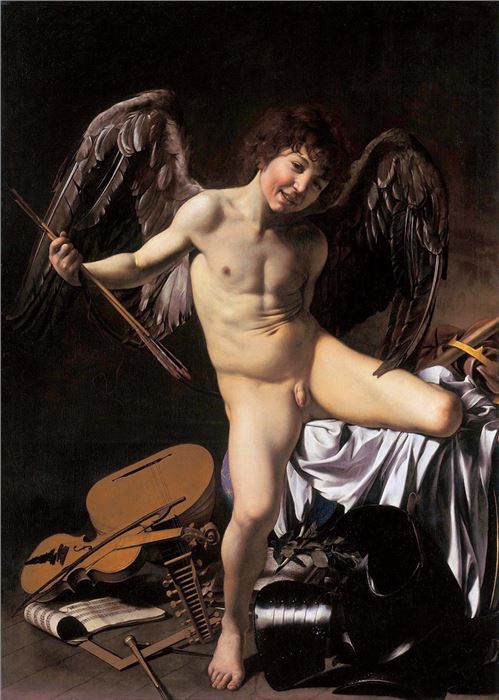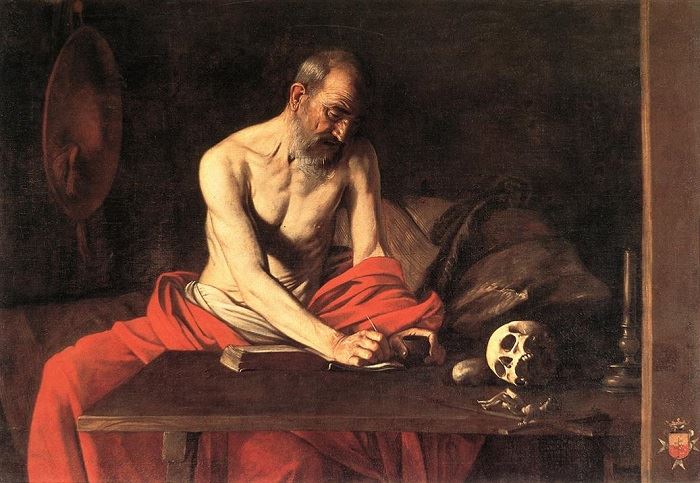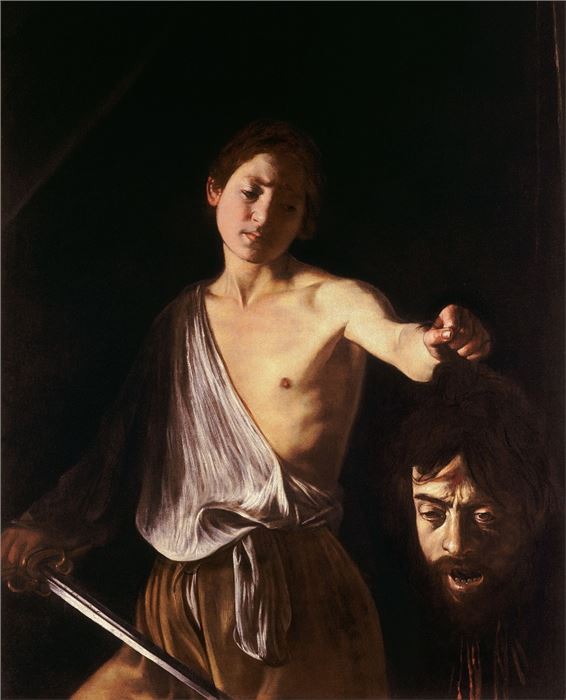The Sordid Life of Caravaggio
ÔÇ£Tenebrism was a trademark technique of CaravaggioÔÇÖs, and perhaps creates a fitting analogy for the artistÔÇÖs life. For, as replete with wrongdoing as it was, he also created numerous paintings of immense beautyÔÇØ
Benjamin Blake Evemy / ║┌┴¤▓╗┤‗ý╚
14 Jun, 2022

To this day, Caravaggio remains one of the most revered Italian painters of the late 16th and early 17th century. Conjuring brooding, violent, and dark biblical masterpieces, it should come as little surprise that the painter himself lived a blood-soaked and turbulent life, fraught with swordfights, heavy drinking, brawls, and even murder.
The Seven Works of Mercy, 1606-1607, oil on canvas. Pio Monte della Misericordia, Naples
Born Michelangelo Merisi, in the town of Caravaggio, Lombardy, in 1573, he went on to study briefly in Milan, before relocating to the grand and luxurious city of Rome. It was here that he found companionship with other artists, as well as persons of social prominence, and he secured public commissions from patrons of immense wealth.
From the onset of his career, Caravaggio was a rebel. Refusing to adhere to the traditional European depictions of idealized religious figures, he instead often used peasants and citizens from the street as models for his sacred subjects. His treatment of light and dark, and his depictions of violent, dramatic, and erotic subject matter also set him apart from both his contemporaries and those who came before.
Medusa, 1597, oil on canvas mounted on wood. Uffizi, Florence
From 1600, Caravaggio made a regular appearance in Roman police records, with fourteen recorded citations in a period of slightly less than six years. Most of these offences were not serious, and included writing defamatory doggerel about his rival, the painter-historian Giovanni Baglione, throwing a plate of artichokes in the face of a waiter who had offended him, obscenely cursing police, carrying a sword without permission, and throwing stones at the window shutter of his estranged landlady. Some of his appearances in the records involved serious bodily violence, however, and he was jailed six or seven times, always being released, often from intervention from friends in high places. This kind of reckless behavior and life in the streets, along with an affinity for its people, must have been an inherent part of Caravaggio’s nature, for in September of 1605, he was described as having no fixed abode, was notorious for wearing expensive clothes until they were all but tatters, and also at one point was using an old canvas as a tablecloth. And it was not out of poverty, for the artist was always paid more than handsomely for his commissions.
Amor Vincit Omnia, 1601–1602, oil on canvas. Gemäldegalerie, Berlin
On the May 29,1606, Caravaggio lost ten scudi on a tennis match with a young man from Terni, Ranuccio Tomassoni. A subsequent argument ensued, and the two beat each other with their racquets. It ended with the men challenging one another to a fight. That night, armed with swords, and accompanied by respective friends, they met and fought. Tomassoni was wounded on the thigh and fell to the ground, where Caravaggio promptly ran him through and killed him. Wounded, he fled to the foothills east of Rome. Since papal authority did not extend past the city walls, the baroque master was safe for the time being, but after several months relocated south to Naples.
The following years were spent in exile in Naples, Sicily, and Malta, where he still found himself in the throes of bizarre circumstances. Nevertheless, his artistic talent outweighed any misgivings that others may have had against him, for he completed many major commissions for portraits and altarpieces.
Naples at the time was under Spanish jurisdiction. It was a lawless and crowded city, ridden with disease and full of filth. Still, it was not without its aristocrats, and Caravaggio completed several of his most important works there, including The Seven Works of Mercy, which was commissioned for the church of Pio Monte della Misericordia, where it is still housed today.
The Seven Works of Mercy housed today in the Pio Monte della Misericordia, Naples (photograph by the author)
Despite enjoying artistic success in Napoli, Caravaggio left for Malta after only a few months. His arrival (and subsequent escape the following year) was facilitated by Fabrizio Sforza Colonna, a Knight of Malta. Caravaggio soon undertook commissions from the Order, which was so proud about having a famous artist as their official painter, that Caravaggio was inducted as a Knight. It was in Malta that he completed his largest painting, The Beheading of Saint John the Baptist, as well as his only ever work to bear his signature, Saint Jerome Writing. In 1608, Caravaggio was arrested and imprisoned, once again for brawling with a member of the Knights of Malta. The Knight was wounded, and Caravaggio found himself having to flee yet again.
Saint Jerome Writing, 1607-1608, oil on canvas. St John's Co-Cathedral, Valletta
This time, Caravaggio found himself in Sicily, where, according to his old friend, Mario Minniti, his behavior had grown even more erratic. He returned to Naples after only nine months. In the October of 1609, he was ambushed, resulting in the disfiguration of his face. It is speculated that the attack may have been linked to the Knights of Malta, who had come for retribution. During this period he painted two paintings that featured his own severed head, Salome with the Head of John the Baptist (Madrid), which he sent to a prominent member of the Knights of Malta in an act of seeking forgiveness, and also David with the Head of Goliath, which he sent to Scipione Borghese, hoping that the Cardinal and art collector would pardon him so that he could return to Rome.
David with the Head of Goliath, c. 1610, oil on canvas. Galleria Borghese, Rome
In the spring or early summer of 1610, Cardinal Ferdinando Gonzaga arranged absolution for the murder of Tomassoni, which meant that Caravaggio could finally return to Rome. Most likely out of suspicion, he chose to sail to a southern Tuscan enclave which was under Spanish jurisdiction at the time, as opposed to traveling overland or sailing directly to the port of Rome. But upon landing, he was mistaken for a wanted fugitive knight, and jailed. Two days later he was released but found that all his possessions had disappeared. He had also likely come down with malaria. He set off under the scorching summer sun, but before long he was delirious and raving. He died miserable and alone a few months short of his 39th birthday. He never made it back to Rome.
Mostly due to the reputation Caravaggio formed as a scoundrel with a violent temper, his work was not always appreciated by critics. In 1642, Baglione wrote “he ruined the art of painting” (even though this statement may well have been payback for the defamatory verses), and in the 19th century, John Ruskin, leading English art critic of the Victorian era, bluntly expressed his disgust for the master’s work, finding in Caravaggio’s paintings, “…horror and ugliness and filthiness of sin.”
Tenebrism – a heightened form of chiaroscuro, the treatment of light and dark – was a trademark technique of Caravaggio’s, and perhaps creates a fitting analogy for the artist’s life. For, as replete with wrongdoing as it was, he also created numerous paintings of immense beauty. And even though his creative life lasted less than two decades, what he left the art world in his tumultuous wake will forever hold the utmost importance.
For more on auctions, exhibitions, and current trends, visit our Magazine Page

 ARTISTS
ARTISTS







